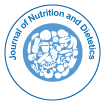Notre groupe organise plus de 3 000 séries de conférences Événements chaque année aux États-Unis, en Europe et en Europe. Asie avec le soutien de 1 000 autres Sociétés scientifiques et publie plus de 700 Open Access Revues qui contiennent plus de 50 000 personnalités éminentes, des scientifiques réputés en tant que membres du comité de rédaction.
Les revues en libre accès gagnent plus de lecteurs et de citations
700 revues et 15 000 000 de lecteurs Chaque revue attire plus de 25 000 lecteurs
Indexé dans
- Google Scholar
- ICMJE
Liens utiles
Revues en libre accès
Partager cette page
Abstrait
Green Synthesized Cobalt Nanoparticles using Asparagus racemosus Root Extract & Evaluation of Antibacterial activity
Govindh Boddeti
The balance between economic development and environmental damage is also evident in the problem of pollution and waste management. Increased economic activity, mainly in industrial countries, has seen a rise in pollution generated from waste including sewage, trash, and litter. Particularly, the textile industry produces a significant amount of liquid effluent pollutants due to the vast amounts of water used in fabric processing. Dyes are a major class of synthetic organic compounds used in many industries (textile, pharmaceutical, rubber, etc.). Nearly 50,000 tons of dyes are discharged into the environment annually. This has resulted in significant water pollution worldwide. The reduction of these dye compounds from industrial wastewater has been achieved using chemical, physical, and biological methods. However, these approaches are time-consuming, costly, and pose disposal problems. Currently, photocatalytic degradation by nanoparticles is attracting significant attention. In photocatalytic degradation, the pollutants are degraded under UV-visible light irradiation in the presence of catalysts. Compared to the conventional methods, this technique is inexpensive and does not form any polycyclic products. In this review, we focus on different green-synthesized NPs such as Au, Ag, Pt, Pd, ZnO, CuO, α-Fe2O3, TiO2, CeO2, SnO2, and NiO together with and their applications in photocatalytic activities
Revues par sujet
- Agriculture et Aquaculture
- Biochimie
- Chimie
- Food & Nutrition
- Génétique et biologie moléculaire
- Géologie et sciences de la Terre
- Immunologie et microbiologie
- Ingénierie
- La science des matériaux
- Le physique
- Science générale
- Sciences cliniques
- Sciences environnementales
- Sciences médicales
- Sciences pharmaceutiques
- Sciences sociales et politiques
- Sciences vétérinaires
- Soins infirmiers et soins de santé
Revues cliniques et médicales
- Allaitement
- Anesthésiologie
- Biologie moléculaire
- Cardiologie
- Chirurgie
- Dentisterie
- Dermatologie
- Diabète et endocrinologie
- Gastro-entérologie
- Immunologie
- La génétique
- Maladies infectieuses
- Médecine
- Microbiologie
- Neurologie
- Oncologie
- Ophtalmologie
- Pédiatrie
- Recherche clinique
- Soins de santé
- Toxicologie

 English
English  Spanish
Spanish  Chinese
Chinese  Russian
Russian  German
German  Japanese
Japanese  Portuguese
Portuguese  Hindi
Hindi